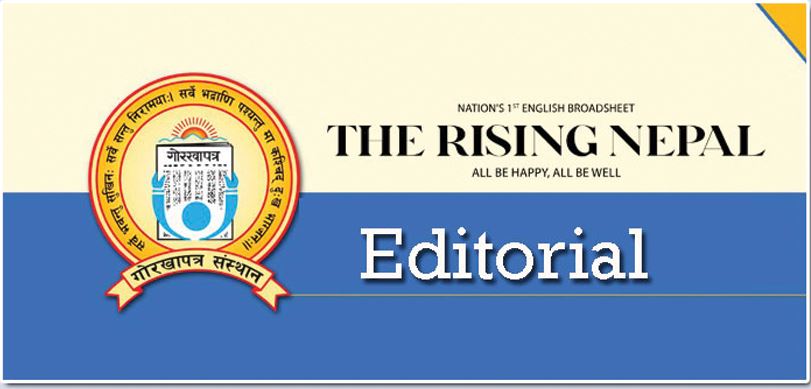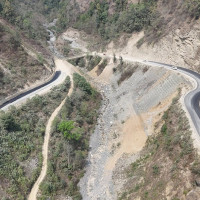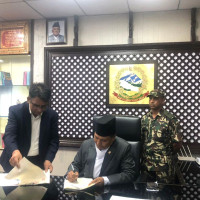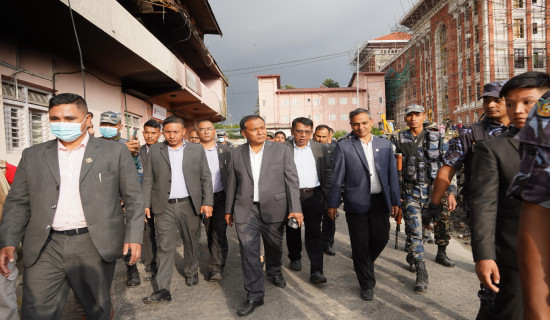- Thursday, 18 September 2025
Pragmatic Budget
The government has unveiled an annual budget of Rs. 1.96 trillion for the fiscal year 2025/026, with a focus on entrepreneurship, employment, production, and productivity growth. Deputy Prime Minister and Finance Minister Bishnu Prasad Paudel presented the annual estimate of revenue and expenditure at the joint meeting of the federal parliament on Thursday. Next year, the budget aims to increase its economic growth rate to 6 per cent from 4.6 per cent, setting several transformative objectives, including alleviating poverty through high, sustainable and broad-based economic growth and creating employment through entrepreneurship development and expanding the public and private investment. It also seeks to boost economic efficiency by increasing the use of modern technology, ensure social justice through social protection and development, and promote quality public service and good governance.
Of that amount, about Rs. 1.18 trillion has been earmarked for recurrent expenditure, Rs. 407.89 billion for capital expenditure and Rs. 375.24 billion for financial management. Apparently, the lion's share of the budget will go to meet general expenses. The government expects to generate Rs. 1.3 trillion in internal revenue, Rs. 53.45 billion in foreign grants, internal and external loans to cover these expenses. To plug the budgetary shortfall of Rs. 595.66 billion, Rs. 362 billion will be covered from internal and Rs. 233.66 billion from external loans.
Through the budget, the government has also announced high priority sectors. Entrepreneurship, employment, production, and productivity growth have been prioritised, as has the increase in strategic investment in fruitful and quality physical infrastructure. Similarly, emphasis has been given to qualitative reform in the social sector. The government also aims to guarantee balanced development and social security and ensure citizen-friendly service, corruption control, and governance reform. These measures are vital to give impetus to the economy still struggling to emerge from the brink of recession.
The government will start the upgradation of the Siddhartha highway, and Rs. 3 billion is allocated for the mid-hill highway. An Information Technology Park in Kathmandu will be built, loans will be provided to youths at 3 per cent for entrepreneurship development and under-construction Chaarali-Siliguri petroleum pipeline will be completed. What's more, land banks will be established at the local level. Likewise, all contract teachers and workers will be integrated into the Social Security Fund (SSF) – a major step that financially secures their future. Dearness allowance has been hiked to Rs. 5000. The government targets to supply 600,000 tonnes of chemical fertiliser, distribute land to 50,000 landless squatters, freeze the assets and passports of directors, officials, and loan defaulters of troubled cooperatives, and expand consumer courts to all provinces.
Tribhuvan International Airport will be developed into a boutique airport, and concrete efforts will be made to get Nepal removed from the EU's aviation safety blacklist. Taxes on alcoholic beverages, cigarettes, and tobacco products will be increased, as will the customs duty on their import. This move will go a long way to reduce their harmful consumption. Additionally, all sectors of the economy will witness positive growth, including wholesale and retail businesses. Every economic indicator is poised to see improvements. Challenges, however, abound. The entire economy is yet to be free from vulnerabilities. Revenue saving meant for development is getting low amid shrinking income sources. The new budget is geared towards resolving the structural problems of the national economy. Nonetheless, it is a pragmatic and development-oriented budget. The government should prove its mettle in implementing it.



-original-thumb.jpg)

-square-thumb.jpg)
-original-thumb.jpg)










